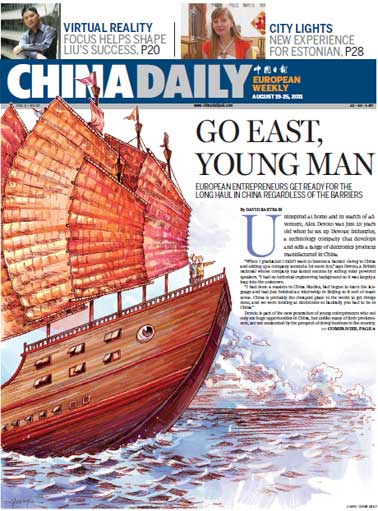View
Fake bakes and white is right
Updated: 2011-09-21 07:50
By Jules Quartly (China Daily)
Surfing the Web often dissolves cultural differences, making us think we live in a globalized, uniform environment. Then, something pops up to make you realize that, though we look much the same, differences may be more than just skin deep.

We search online in our own language and our results are to some extent a product of this. Switch to another language or geographical location and you may find the results are the opposite of what you might expect. Take for example the suntan. It's a more colorful and controversial subject than you might imagine.
If you set your dial to English-language search results and set your country to Europe or North America, the suntan represents health and sexiness, a "golden glow".
Some entertainers - like David Hasselhoff, Cheryl Cole and the practically orange George Hamilton - wouldn't dare leave the house unless they were bronzed all over. Accordingly, the general public follows suit and most Brits would think it a waste of time going on holiday unless they got a tan.
Before the industrial revolution in the West, tans belonged to just manual laborers, while the upper classes stayed inside and watched them toil. This changed in the 1920s when the poor were stuck in factories and it was the idle rich going brown on holidays to the Cote d'Azure.
Even when it is common knowledge that excessive exposure to the sun can cause skin cancer, premature aging and even reduce life expectancy, being pale is still not cool. On the contrary, fake bakes and tanning products such as creams and lotions are de rigeur.
In a recent BBC article titled, Fake tan: How did it become the new normal? it was revealed that 41 percent of UK women use self-tanning products: "There's a growing perception that pale skin has become obsolete for a big section of the West's population."
Turn the dials on your computer settings, search in Chinese, or just stroll around Beijing on a hot day and the opposite applies. Recent visitors from the West can't get to grips with the idea of fashionable Chinese women walking around, rain or shine, with parasols.
Here, as the saying goes, "One white hides a hundred defects," and both Chinese women and men, and many other Asians, believe that white skin suits black hair, clothes, hides spots or blemishes and has been fashionable since at least the Tang Dynasty (AD 618-906).
While Asians appear to have science on their side as far as avoiding the harmful rays of the sun is concerned, the use of cosmetics to blanch the skin is not so healthy, as many of the whitening products dye or bleach, causing redness, inflammations and other side effects.
One study estimates that about 50 percent of women in Asian countries use skin lightening products in what is a multi-billion dollar industry.
So, while the West wants to be golden-skinned like, say, the Chinese; the Chinese themselves want to be pale like Caucasians.
It sounds like a testament to the power of advertising. You can imagine pharmaceutical companies in the West thinking to themselves, "Gosh, wouldn't it be great if we could convince our customers that being bronze is best" and sell them products they don't need. They have even come up with an implant that can supply a three-month tan without risking skin cancer.
Vice versa in the East and pale skin implants can't be that far off. Even as someone reads this, I bet they're thinking of the vast profits to be made.
It would seem the bottom line is people want what they haven't got. And on that we should be able to agree.

E-paper

The snuff of dreams
Chinese collectors have discovered the value of beautiful bottles
Perils in relying on building boom
Fast forward to digital age
Bonds that tie China. UK
Specials

Let them eat cake
Cambridge University graduate develops thriving business selling cupcakes

A case is laid to rest
In 1937, a young woman'S body was found in beijing. paul french went searching for her killer

Banking on change
Leading economist says china must transform its growth model soon
